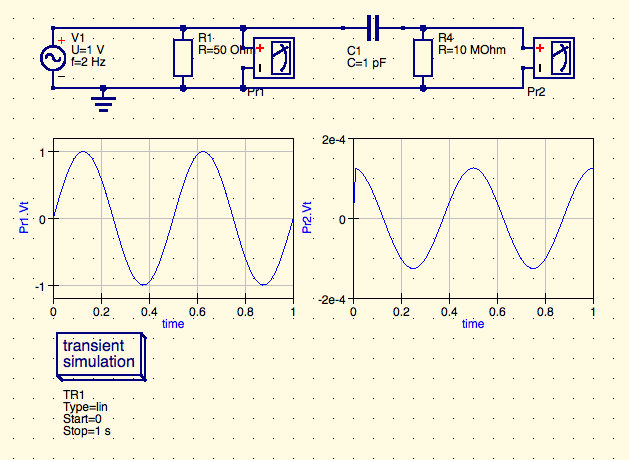I was playing with qucs and noticed that capacitors are not simulated as I expected. I designed simplest circuit that illustrates that case.
AC Source: 2 Hz (2 times a a second) Capacitor: 1pF Simulation: 1 second
I expected to see different graphs on Probe 1 and Probe 2 BUT they are same.
Is it correct results? If not how do I get it to show correct results? .. or how should I use qucs to simulate such circuit? (e.g. should I put some resistors)
PS I added 10 MOhm in parallel and it worked. Thanks @DaveTweed


